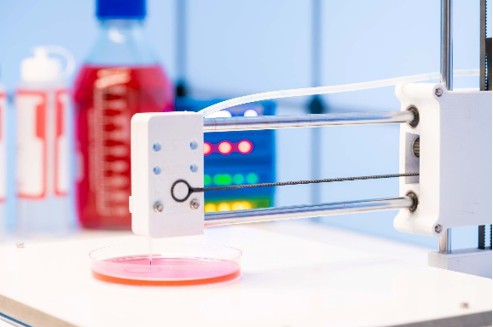
Currently, asymmetric catalysis is not only a hot research direction in organic chemistry, but also has been extended to medicinal chemistry, agricultural chemistry and material science in recent years. The increasing demand for optically pure compounds places new demands on the research of novel catalysts, novel reaction conditions, and novel chiral frameworks. BOC Sciences is committed to providing personalized, professional and top-quality asymmetric catalysis support services. We mainly provide the most suitable one-stop solution according to the needs of customers, including synthetic route design, reaction substrate screening and synthesis product analysis. In addition, possible reaction mechanisms may also be provided.
Introduction

In an asymmetric reaction, the reaction substrate and the catalytic reagent/ligand combine to form a diastereomeric transition state. At least one of the reaction substrates or catalysts should contain a chiral center to achieve asymmetric induction at the reaction site. Asymmetry is usually produced when functional groups containing sp2 hybrid carbon are converted into sp3 tetrahedral carbon. These sp2 functional groups include carbonyl, enamines, enols, imines and alkenes. The asymmetric synthesis of chiral carbon is one of the most interesting research fields for synthetic organic chemists. The purpose of asymmetric synthesis is not only to prepare optically active compounds, but also to achieve high stereoselectivity (including diastereoselectivity and enantioselectivity). The criteria for a successful asymmetric reaction are :
(1) High enantiomeric excess (ee).
(2) The chiral auxiliaries agent or chiral catalysts are easy to prepare and can be recycled.
(3) Both R and S configurations can be prepared.
(4) Preferably catalyzable with high synthetic catalytic efficiency.
Our Asymmetric Catalytic Capabilities
BOC Sciences focuses on chiral synthesis technology, and has many years of experience and innovative research and development capabilities. At present, the asymmetric catalytic technology of BOC Sciences covers all-round needs of customers. Our asymmetric catalytic capabilities include:
Chiral metal catalysis has developed many excellent chiral ligand and metal complex catalysts. Chiral ligands are the chiral source of most metal-catalyzed reactions, and also have a significant impact on the catalytic performance and stability of the central metal (Fig. 1). The development of new chiral ligands is an important link in the source innovation of chiral metal catalysis. In addition, designing and synthesizing new chiral catalysts, expanding the substrate types for important reactions and improving their stereoselectivity control and catalytic efficiency are the mainstream of asymmetric catalytic reactions.
 Fig. 1. Partially representative chiral ligands.
Fig. 1. Partially representative chiral ligands.
The enantioselective reaction catalyzed by organic molecules is a kind of non-metal catalyzed reaction based on mimic enzyme. Organocatalysts have aroused widespread interest due to the advantages of non-toxicity, availability, stability in air, reaction can be carried out in non-anhydrous solvents and simple operation. Currently, many types of small organic molecules have been used as catalysts for various reactions. Many molecules have dual activation functions that activate both substrates and reagents (Fig. 2).
 Fig. 2. Partially representative organic catalysts.
Fig. 2. Partially representative organic catalysts.
With the optimization of high-throughput screening techniques and available enzyme activities, biocatalysis has become a common tool for chiral synthesis. Biocatalytic reactions have high chemical, regio and stereoselectivity, and are suitable for the synthesis and preparation of fine chemical products in the fields of medicine, food and pesticides. In recent years, biocatalysis has become a powerful complement to modern organic synthesis. Furthermore, biocatalysts are used on a large scale to manufacture specialty and even bulk chemicals. BOC Sciences has rich experience in this field and is willing to serve customers in need.
Chemical Reactions We Support
BOC Sciences has developed a variety of highly efficient and highly selective asymmetric catalysts, and further used these catalysts to complete the synthesis of chiral compounds. Our chemical engineering department is equipped with professional organocatalysis experts for each reaction type to support asymmetric catalytic reactions of various groups. Our catalytic reaction types include prolinols, imides, enamines, aldehydes, ketones, carboxylic acids, and enols, etc.
- α-alkane/arylationsubstitution andconjugate addition of carbonyl compounds
- Enantioselective nucleophilic addition of carbonyl (imine) compounds
- Aldol condensation and allylation
- Asymmetric Diels-Alder reaction and other ring-forming reactions
- Asymmetric oxidation reaction
- Asymmetric catalytic hydrogenation and other reduction reactions
- Asymmetric synthesis of natural products
- Biocatalytic reaction
Our Facilities

In addition to providing one-stop development and synthesis of chiral compounds, BOC Sciences also provides preliminary screening of chiral columns, chiral analysis testing and analytical method development services. We can choose the appropriate resolution and analysis method according to the compound properties. If you are interested in our chiral technical support services, please contact us for more information.
Chiral Technical Information



 Fig. 1. Partially representative chiral ligands.
Fig. 1. Partially representative chiral ligands. Fig. 2. Partially representative organic catalysts.
Fig. 2. Partially representative organic catalysts.











